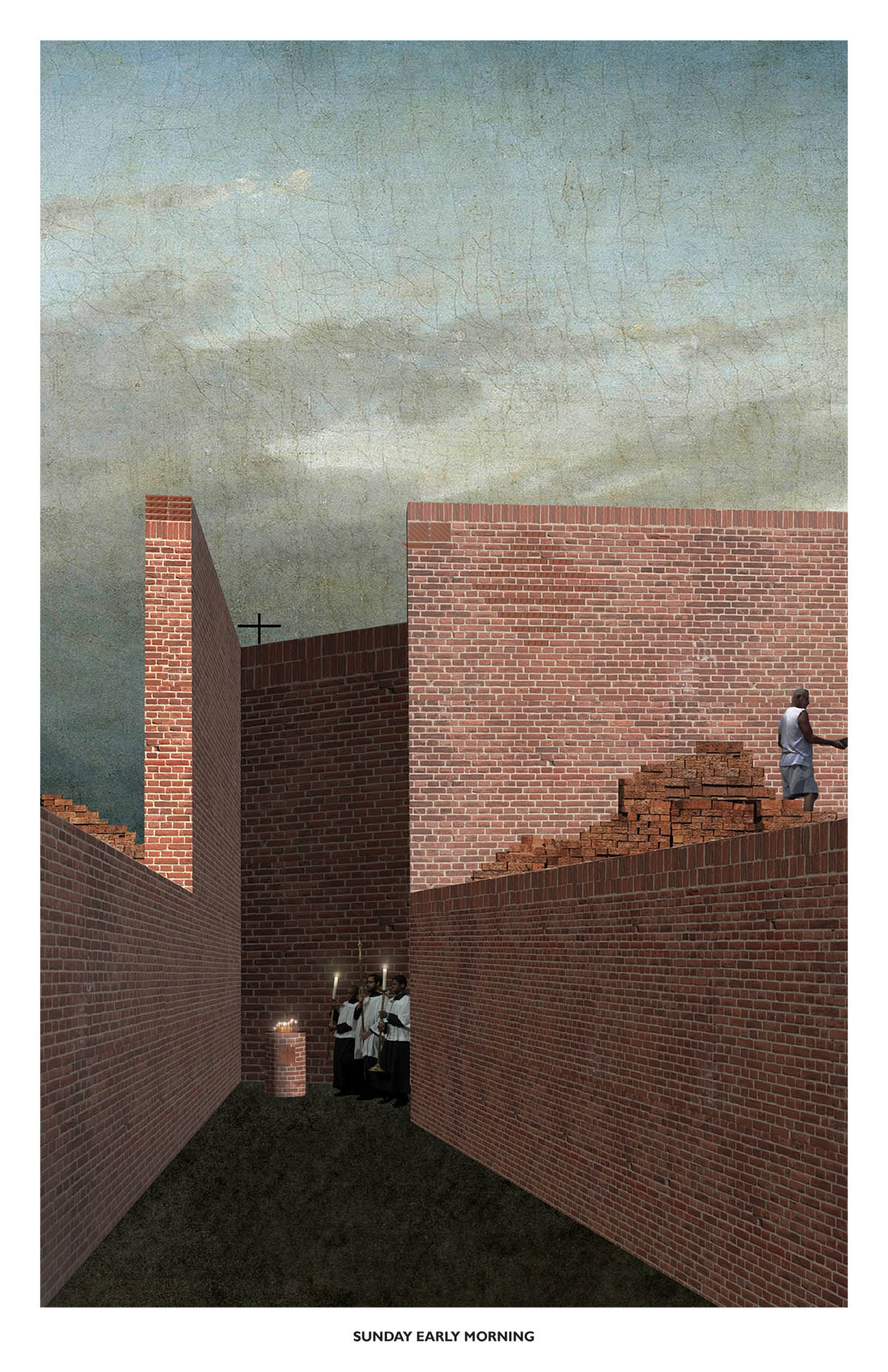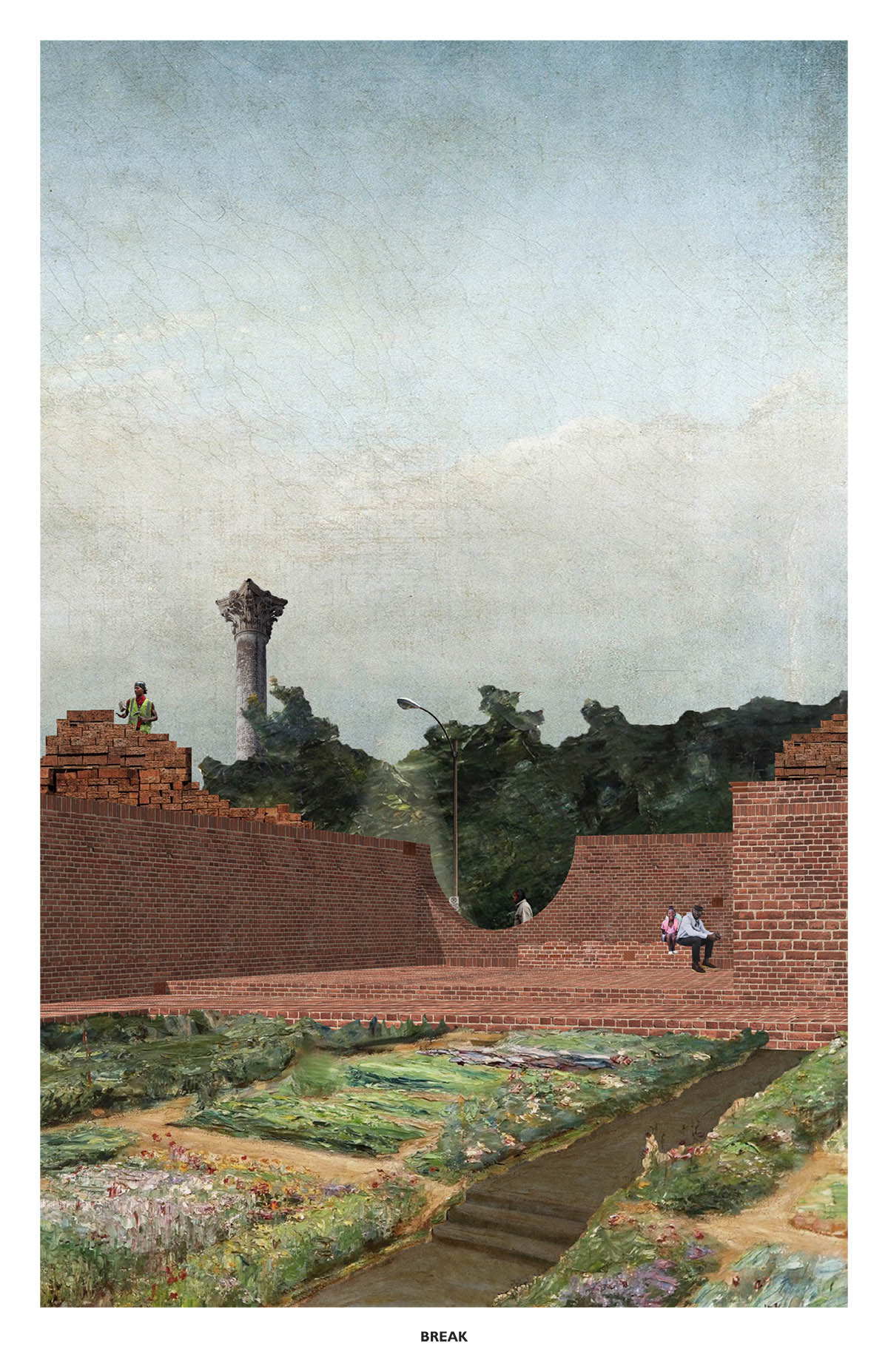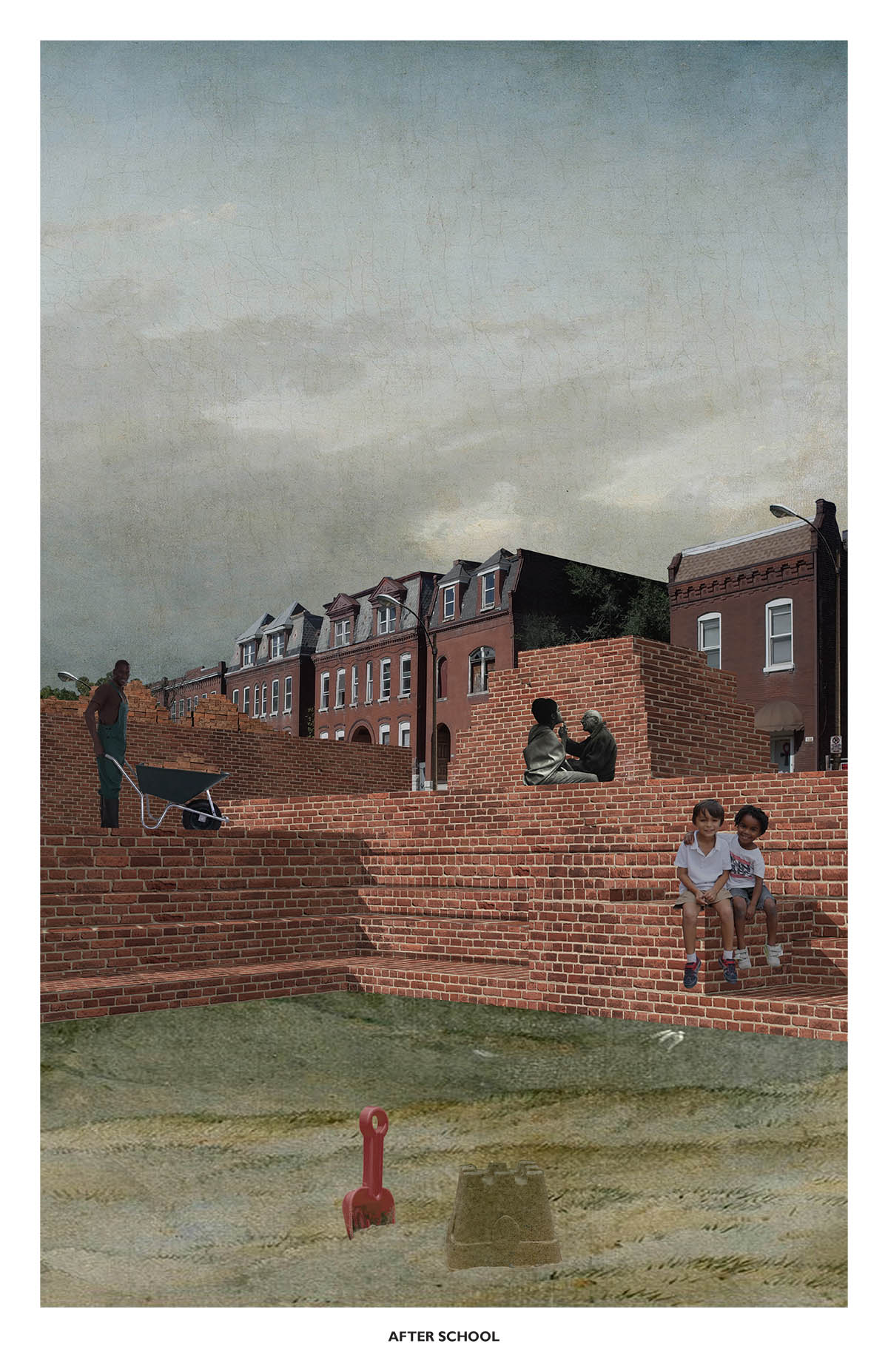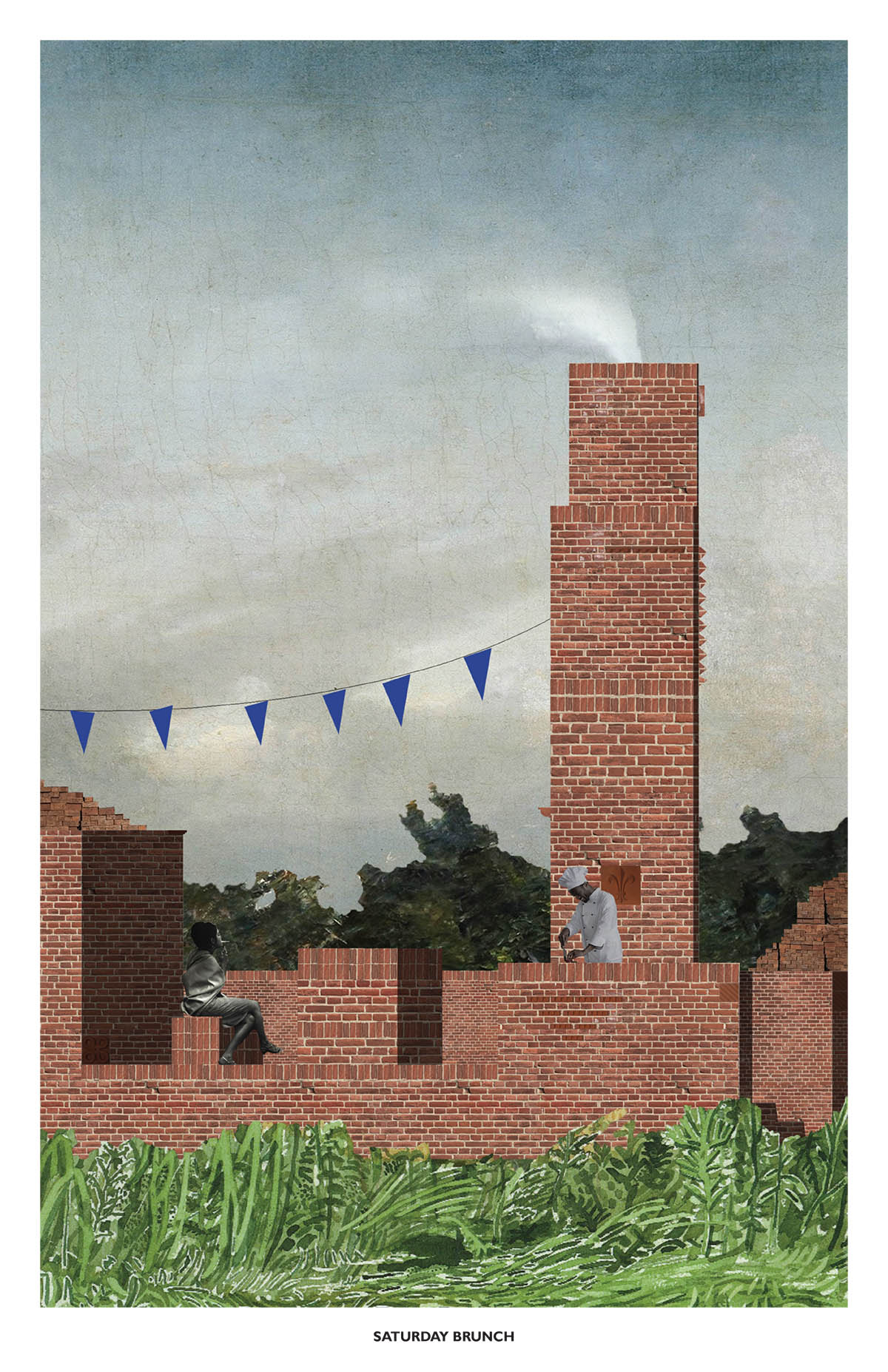STL Brick Bank
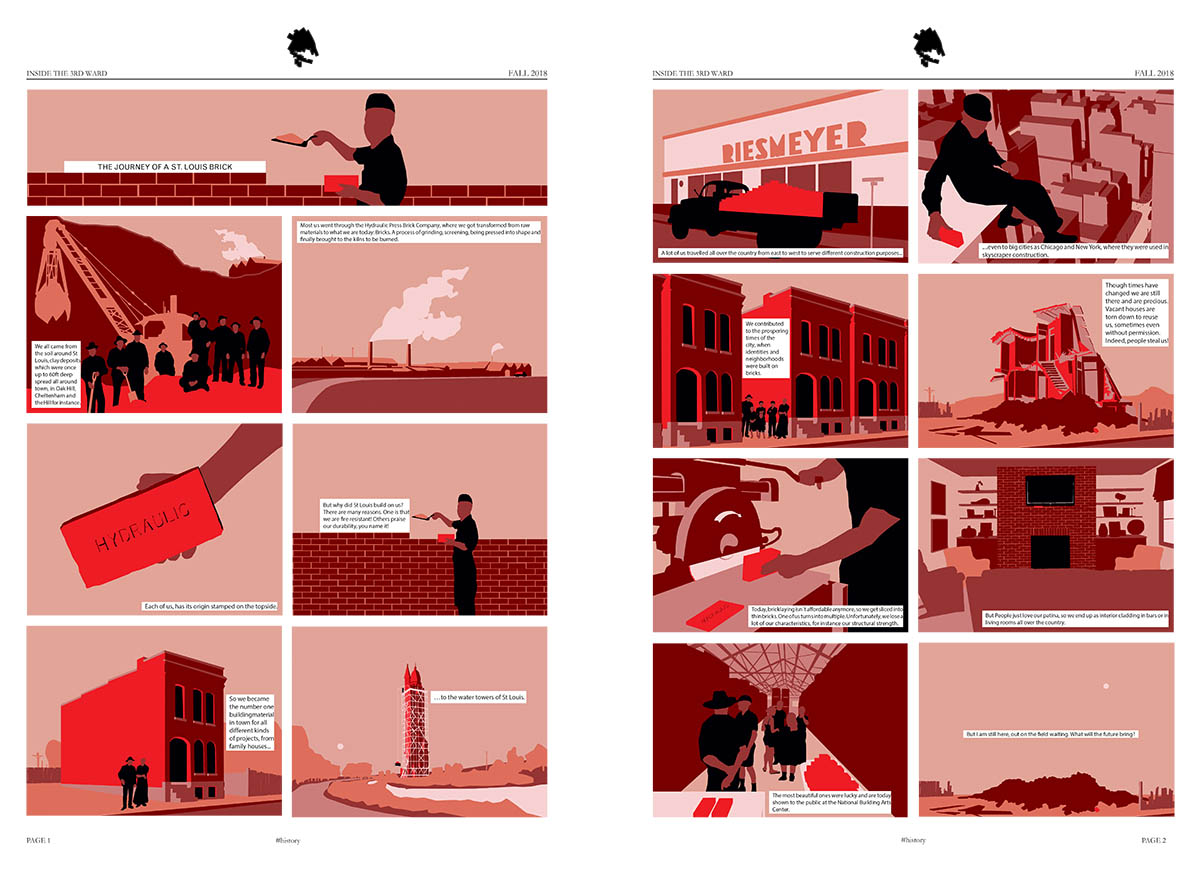
by Jakob Junghanss (ETH Zurich Exchange Program)
In the last decades, St. Louis’ built legacy has been increasingly challenged by rising vacancies. This has shaped many neighborhoods’ appearances, including the Third Ward. Demolition and material salvage emerged as strategies to address this issue, while providing job opportunities for local citizens. But how do these markets operate and what happens to the materials, such as the famous St. Louis bricks?
Today, salvaged bricks leave the neighborhood with the demolition companies, entering a booming market of reclaimed materials all over the country. St. Louis bricks are a popular reclaimed good; currently two bricks are being traded for one dollar. Considering that a vacant house can be bought for $1,000, built out of approximately 40,000 bricks, it seems that the material value of a disassembled house is more than that of an intact one.
This project wants to emphasize that the neighborhood should contribute and benefit from the material flows and their revenues. Otherwise the community is not just losing the bricks as an essential part of their built heritage, but also not profiting from the reclaimed brick business.
The proposal–a cooperative brick bank for the Third Ward–transforms salvaged bricks into an asset for the community. Storing bricks locally enables the community to invest into the salvaged material market, as well as ensuring that the bricks and their history are staying in the Ward. A loose storage–the checking account–provides brick traders on a daily basis, while a solid masonry structure–the savings account (also defining the brick banks appearance)–offers a long term asset. The brick bank is anchored in the neighborhood, offering proximate institutions a space to activate and engage with the neighborhood. Depending on the salvage brick market, the appearance of the brick bank is constantly evolving.
